Embracing the Challenge: Homesteading During Winter
A small, snow-covered building sits nestled in the heart of a dense forest. Inside, a wood-burning stove crackles with life, casting a warm glow over the cozy interior. Outside, the world is blanketed in white, and the silence is almost palpable. This is the scene that greets Sarah and her family every morning as they rise to begin another day on their homestead. Despite the harsh conditions, they find joy and fulfillment in their daily routines. How do they manage to not only survive but thrive in such an environment? Let’s explore the secrets of winter homesteading.
As the leaves fall and the air turns crisp, many homesteaders face a unique set of challenges that test their resolve and resourcefulness. Winter is not just a season of hibernation; it is a time when the true spirit of self-sufficiency comes to the forefront. For those who choose to live off the land, the cold months can be both daunting and rewarding. This article delves into the intricacies of homesteading during winter, offering practical tips, inspiring stories, and a deep dive into the mindset required to thrive in this challenging environment.
Preparing for Winter
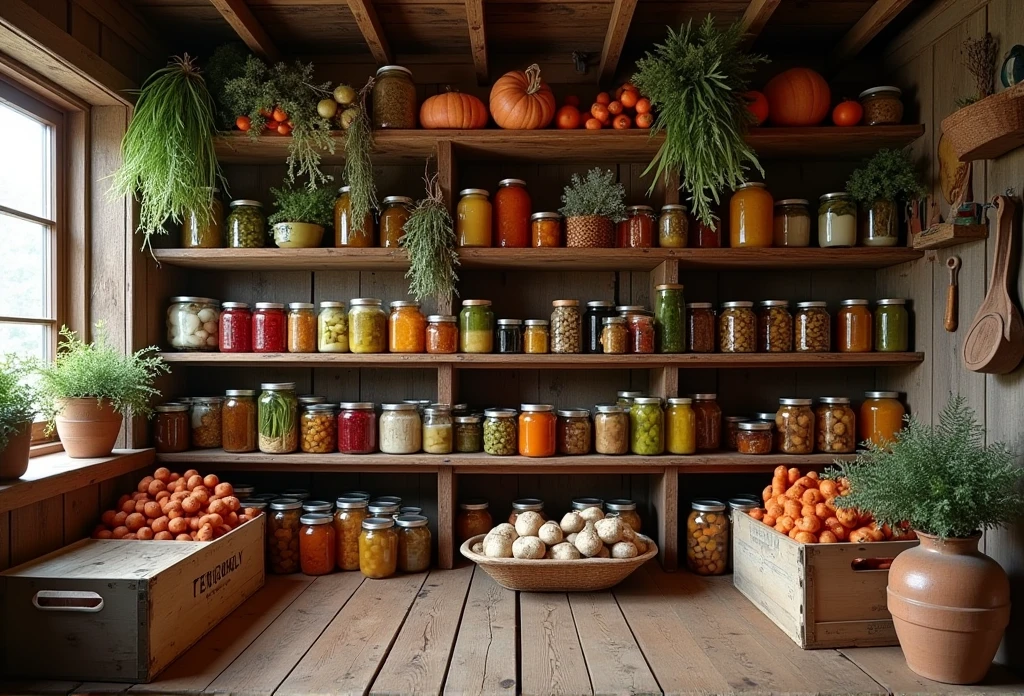
The key to successful winter homesteading lies in preparation. Just as a bear prepares for hibernation, homesteaders must stockpile resources and fortify their homes to withstand the elements. Here are some essential steps to take before the first snowfall:
- Stocking Up on Supplies:
- Food: Canning, drying, and freezing summer harvests are crucial. Stock up on root vegetables, canned goods, and grains. Consider raising chickens for a steady supply of fresh eggs.
- Water: Ensure you have a reliable water source. If your primary source is a well, make sure it is insulated to prevent freezing.
- Fuel: Wood, propane, and other heating sources should be plentiful. Check your woodpile and consider alternative heating methods like solar panels or geothermal systems.
- Home Maintenance:
- Insulation: Seal any gaps in windows and doors to prevent heat loss. Consider adding extra insulation to walls and attics.
- Heating Systems: Have your furnace or wood stove inspected and serviced. Ensure chimneys are clean and safe.
- Emergency Preparedness: Create an emergency kit with essentials like batteries, flashlights, first-aid supplies, and a backup heating source.
- Animal Care:
- Shelter: Provide adequate shelter for livestock. Ensure they have a dry, draft-free area to rest.
- Feed and Water: Store enough feed to last through the winter. Use heated waterers to prevent water from freezing.
- Health: Regularly check animals for signs of illness and provide necessary vaccinations.
Daily Life on a Winter Homestead
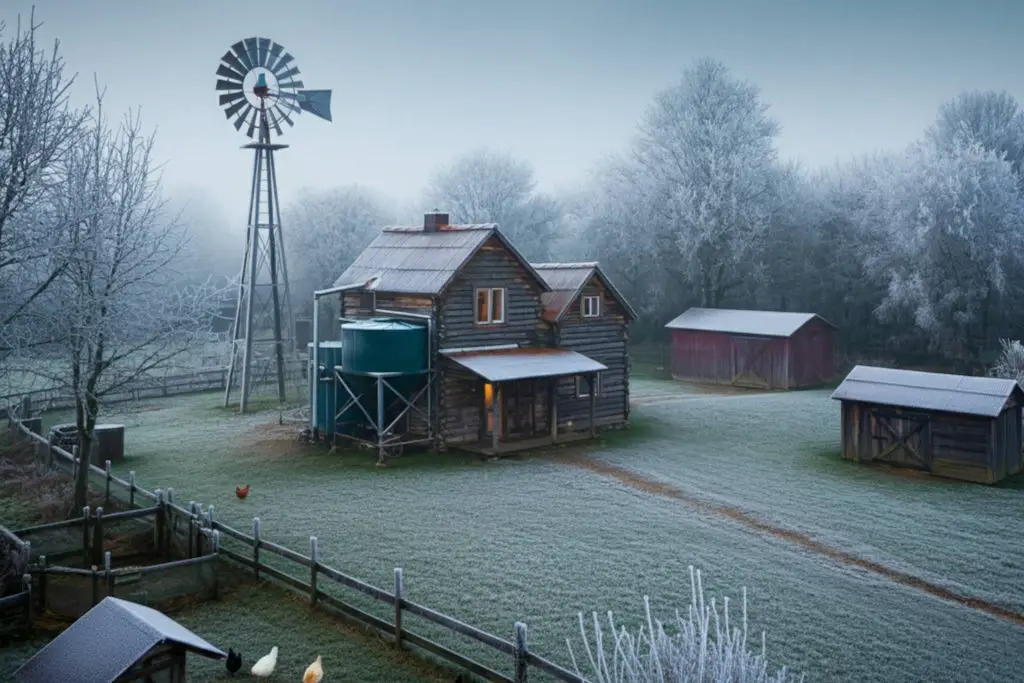
Winter on a homestead is a time of both challenge and reward. The days are shorter, the temperatures are lower, and the tasks are different from those in other seasons. However, with the right mindset and preparation, winter can be a fulfilling and enriching period. Here’s a detailed look at what a typical day might look like for a winter homesteader.
Morning Routine
- Start the Fire
- Wood Stove: One of the first tasks each morning is to tend to the wood stove. Ensure the fire is burning steadily to keep the home warm. This involves adding wood, adjusting the damper, and checking the ash pan.
- Furnace: If you use a furnace, ensure it is functioning properly. Check the thermostat, replace filters if necessary, and make sure the pilot light is lit.
- Alternative Heating: Consider using space heaters, electric blankets, or even a pellet stove to supplement your main heating source.
- Check Animals
- Feeding and Watering: Visit the barn or coop to feed and water your livestock. Chickens, goats, and other animals need consistent care, especially in the cold.
- Health Checks: Inspect your animals for signs of illness or distress. Look for symptoms like lethargy, loss of appetite, or abnormal behavior.
- Shelter Maintenance: Ensure that the shelters are dry and draft-free. Add extra bedding if needed and clear any snow or ice from entrances.
- Breakfast
- Hearty Meals: Start the day with a nutritious and filling breakfast. Options include oatmeal, scrambled eggs, pancakes, and fresh bread. Incorporate foods that are high in protein and complex carbohydrates to provide sustained energy.
- Hydration: Drink plenty of water or herbal tea to stay hydrated. Cold weather can be dehydrating, and warm beverages are comforting.
Chores and Tasks
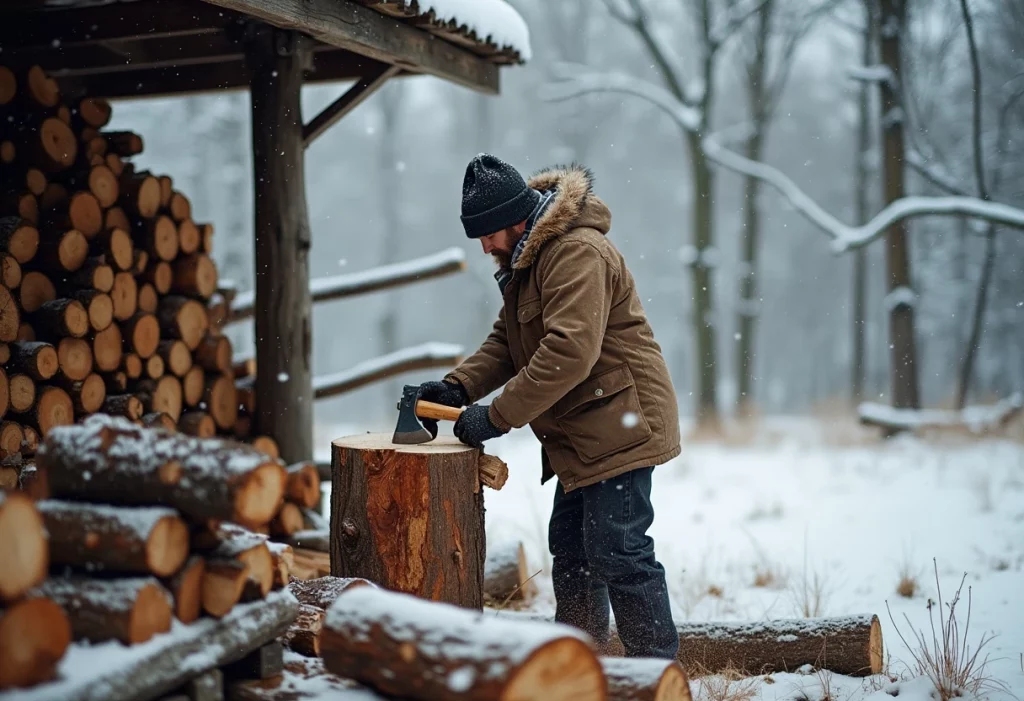
- Wood Cutting and Splitting
- Preparation: Gather your tools, including an axe, maul, and splitting wedge. Wear appropriate clothing and safety gear, such as gloves and eye protection.
- Technique: Learn proper techniques for splitting wood efficiently. Place the log on a stable surface and strike the center with the maul. Rotate the log as needed to split it evenly.
- Storage: Stack the split wood in a dry, covered area to protect it from moisture. Arrange the wood in a way that allows for good airflow to promote drying.
- Garden Maintenance
- Protecting Plants: Use mulch, straw, or burlap to insulate any remaining plants. Cold frames and greenhouses can also protect delicate crops from frost.
- Planning: Winter is a great time to plan your spring garden. Review seed catalogs, sketch out planting layouts, and order seeds for the upcoming growing season.
- Indoor Gardening: Consider starting seeds indoors under grow lights. This can give your plants a head start and extend your growing season.
- Crafting and Repair
- Woodworking: Use the slower pace of winter to work on woodworking projects. Build furniture, repair tools, or create decorative items for your home.
- Sewing: Mend clothes, make quilts, or craft new garments. Sewing is a practical and rewarding activity that can also save money.
- Repair and Maintenance: Check and repair any equipment, tools, or structures that need attention. This includes fixing fences, cleaning gutters, and servicing vehicles.
- Household Chores
- Cleaning: Maintain a clean and organized home. Dust, vacuum, and mop regularly to keep your living space comfortable and hygienic.
- Cooking: Winter is a great time to experiment with slow-cooking and baking. Soups, stews, and baked goods are perfect for warming up the house and providing nourishing meals.
- Laundry: Wash clothes and linens, and hang them to dry. Use natural detergents and avoid overloading the washer to prevent damage.
- Water Management
- Heated Waterers: Use heated waterers for livestock to prevent water from freezing. Check them regularly to ensure they are working correctly.
- Insulation: Insulate pipes and faucets to prevent freezing. Use pipe insulation, heat tape, or foam sleeves to protect exposed plumbing.
- Snow and Ice Removal: Clear pathways and driveways of snow and ice to ensure safe access. Use a snowblower, shovel, or de-icing products as needed.
Evening Relaxation

- Reading and Learning
- Books and Magazines: Winter is an ideal time to read books on homesteading, gardening, animal care, and other topics of interest. Libraries and online resources offer a wealth of information.
- Online Courses: Enroll in online courses or webinars to expand your knowledge and skills. Many platforms offer free or low-cost options.
- Journaling: Keep a journal to document your experiences, ideas, and reflections. Writing can be therapeutic and help you stay focused on your goals.
- Family Time
- Board Games and Puzzles: Spend quality time with family playing board games, solving puzzles, or engaging in other group activities. These activities foster bonding and create lasting memories.
- Storytelling: Share stories, folklore, and personal anecdotes around the fireplace. Storytelling is a timeless tradition that brings people together.
- Crafts and Projects: Work on crafts and DIY projects together. Knitting, crocheting, and building models are fun and creative activities for all ages.
- Bedtime Routine
- Hot Bath or Shower: End the day with a relaxing hot bath or shower. Use natural soaps and lotions to moisturize your skin.
- Warm Bed: Make your bed cozy with warm blankets, flannel sheets, and a hot water bottle. A warm bed can help you fall asleep faster and sleep more soundly.
- Reading and Reflection: Read a book or spend a few minutes reflecting on the day. Gratitude journals can help you focus on the positive aspects of your life.
Additional Activities
- Physical Exercise
- Indoor Workouts: Stay active with indoor workouts such as yoga, Pilates, or bodyweight exercises. Use exercise equipment like resistance bands or a stationary bike.
- Outdoor Activities: When the weather permits, engage in outdoor activities like snowshoeing, cross-country skiing, or ice skating. These activities provide fresh air and physical exertion.
- Chores as Exercise: Treat household chores as a form of exercise. Vacuuming, scrubbing floors, and chopping wood can be surprisingly effective for staying fit.
- Social Connections
- Community Events: Participate in local community events, such as potlucks, workshops, and holiday celebrations. These events provide opportunities to connect with others and share resources.
- Online Forums: Join online homesteading communities and forums to exchange ideas, ask questions, and share experiences. Online connections can be especially valuable during the winter months.
- Visits and Guests: Invite friends and family over for visits. Hosting guests can break the monotony of winter and provide a welcome change of pace.
- Mental Health
- Mindfulness and Meditation: Practice mindfulness and meditation to reduce stress and improve mental clarity. Even a few minutes a day can make a significant difference.
- Creative Hobbies: Engage in creative hobbies like painting, writing, or music. Creative expression can be a powerful outlet for emotions and a source of joy.
- Therapy and Support: If needed, seek professional help or support groups. Mental health is just as important as physical health, and there is no shame in asking for assistance.
Overcoming Challenges
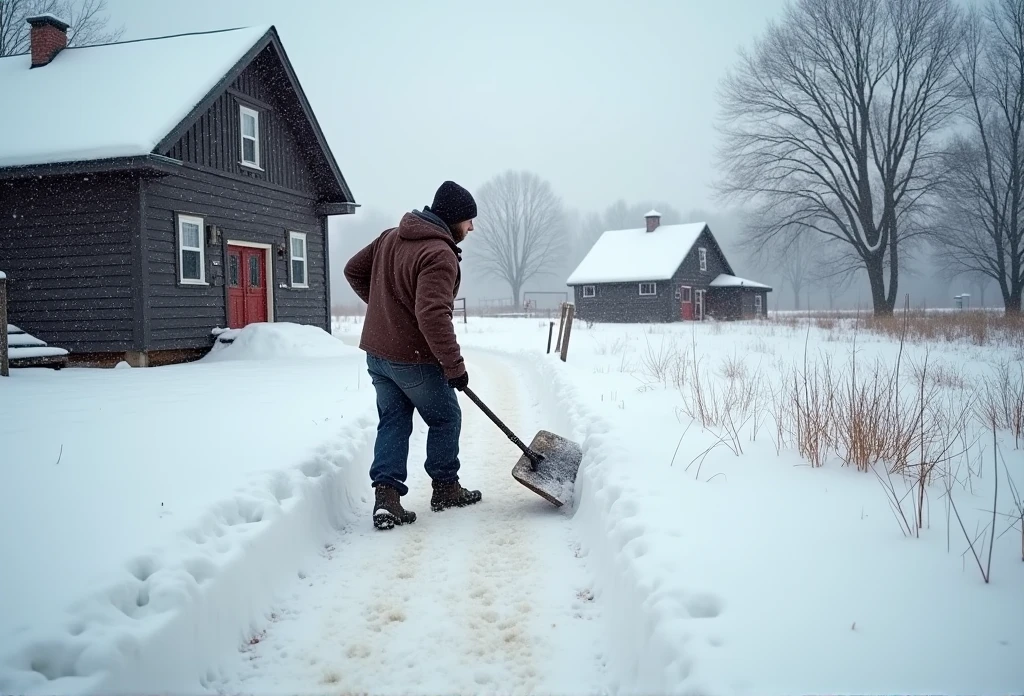
Overcoming challenges is a critical aspect of winter homesteading. The harsh conditions and limited daylight can test even the most experienced homesteaders. However, with the right strategies and mindset, these challenges can be managed effectively. Here’s an expanded section on overcoming the common challenges faced during winter homesteading.
1. Extreme Weather
Blizzards and Ice Storms
- Stay Informed: Keep a close eye on weather forecasts and alerts. Sign up for local emergency notification systems to receive timely updates.
- Emergency Kit: Prepare an emergency kit with essentials such as flashlights, batteries, first-aid supplies, non-perishable food, water, and a backup heating source (e.g., a portable generator or a wood stove).
- Safe Travel: If you need to travel, ensure your vehicle is equipped with a winter survival kit, including blankets, a shovel, sand or cat litter for traction, and a cell phone charger.
- Power Outages: Have a plan in place for power outages. Use battery-powered lights, candles, and oil lamps for lighting. Keep a supply of blankets and warm clothing to stay insulated.
- Clear Driveways and Pathways: Use a snowblower or shovel to clear driveways and walkways. Apply de-icing products sparingly to avoid environmental harm.
Frostbite and Hypothermia
- Dress Appropriately: Layer your clothing to stay warm and dry. Wear moisture-wicking base layers, insulating mid-layers, and waterproof outer layers.
- Stay Dry: Wet clothing can significantly increase the risk of hypothermia. Change into dry clothes immediately if you get wet.
- Check for Symptoms: Be aware of the signs of frostbite (numbness, pale or waxy skin) and hypothermia (shivering, confusion, slurred speech). Seek medical attention if you suspect either condition.
- Warm Beverages: Drink warm, non-alcoholic beverages to maintain your core temperature. Avoid caffeine and alcohol, as they can exacerbate the effects of cold.
2. Isolation
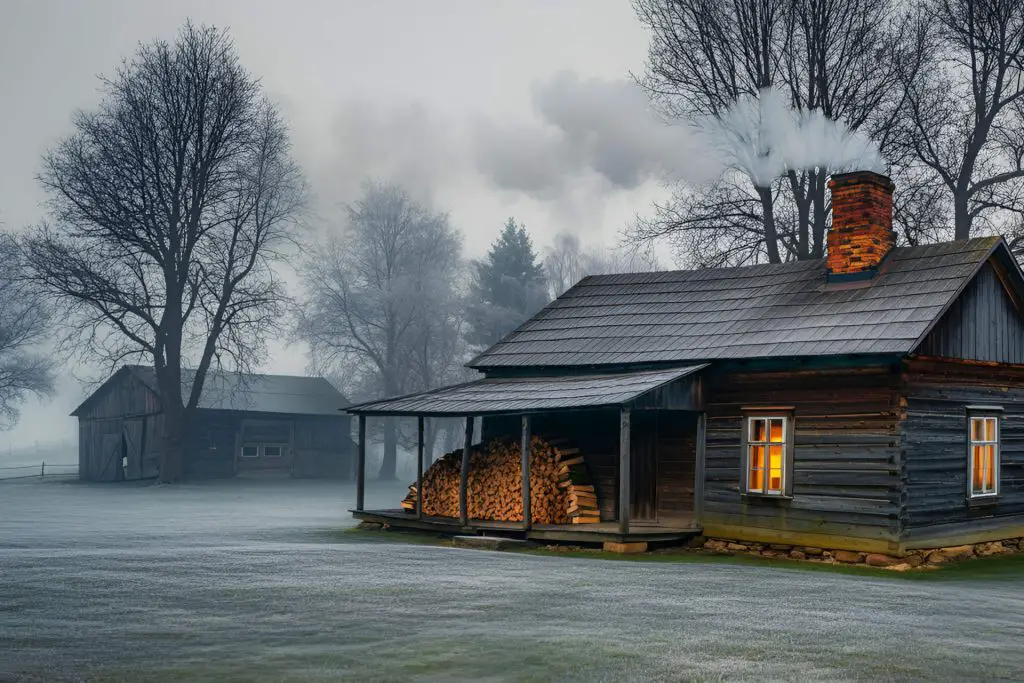
Mental Health
- Routine: Establish a daily routine to provide structure and a sense of normalcy. Consistent schedules can help combat feelings of isolation and depression.
- Connect with Others: Use technology to stay in touch with friends and family. Video calls, instant messaging, and social media can help you feel connected.
- Community Support: Join local homesteading groups or online forums to share tips, experiences, and support. Community connections can be invaluable.
- Mindfulness and Meditation: Practice mindfulness and meditation to reduce stress and improve mental clarity. Even a few minutes a day can make a significant difference.
- Creative Hobbies: Engage in creative hobbies like painting, writing, or music. Creative expression can be a powerful outlet for emotions and a source of joy.
Social Engagement
- Local Events: Participate in local community events, such as potlucks, workshops, and holiday celebrations. These events provide opportunities to connect with others and share resources.
- Volunteer: Offer your skills and time to local organizations or neighbors. Volunteering can give you a sense of purpose and help build community ties.
- Guests and Visits: Invite friends and family over for visits. Hosting guests can break the monotony of winter and provide a welcome change of pace.
- Online Learning: Take advantage of online courses and webinars to learn new skills and meet people with similar interests. Many platforms offer free or low-cost options.
3. Resource Management
Energy Conservation
- Insulation: Ensure your home is well-insulated to minimize heat loss. Seal gaps around windows and doors, add extra insulation to walls and attics, and use draft stoppers.
- Heating Efficiency: Use a programmable thermostat to control your heating system. Lower the temperature at night and when you’re away from home.
- Alternative Heating: Consider using alternative heating sources like wood stoves, pellet stoves, or solar panels. These can be more efficient and cost-effective than traditional heating methods.
- Energy-Efficient Appliances: Use energy-efficient appliances and light bulbs to reduce your overall energy consumption.
Water Management
- Insulate Pipes: Wrap pipes and faucets with insulation to prevent freezing. Use pipe insulation, heat tape, or foam sleeves to protect exposed plumbing.
- Heated Waterers: Use heated waterers for livestock to prevent water from freezing. Check them regularly to ensure they are working correctly.
- Water Storage: Store a supply of water in case of emergencies. Fill large containers with water and keep them in a cool, dark place.
- Conservation: Practice water conservation by fixing leaks, using low-flow fixtures, and reusing water where possible. Collect rainwater for non-potable uses like watering plants.
Food Security
- Canning and Preserving: Preserve summer and fall harvests through canning, freezing, and drying. Store canned goods in a cool, dry place and label them with the date.
- Root Cellars: Use a root cellar to store root vegetables, apples, and other produce. Ensure the root cellar is well-ventilated and maintains a consistent temperature.
- Garden Planning: Plan your spring garden during the winter months. Order seeds, sketch out planting layouts, and prepare your soil for the upcoming growing season.
- Animal Feed: Store enough feed to last through the winter. Consider growing hay or other forage crops on your homestead to reduce dependency on external sources.
4. Health and Safety
Animal Care
- Shelter: Provide adequate shelter for livestock. Ensure they have a dry, draft-free area to rest. Use straw or hay for bedding to keep them warm.
- Feed and Water: Store enough feed to last through the winter. Use heated waterers to prevent water from freezing. Check water sources regularly to ensure they are accessible and clean.
- Health Checks: Regularly check animals for signs of illness and provide necessary vaccinations. Consult with a veterinarian if you notice any health issues.
- Exercise: Ensure your animals get regular exercise to maintain their health and well-being. Provide a safe, enclosed area for them to move around and stretch their legs.
Human Health
- Nutrition: Eat a balanced diet rich in fruits, vegetables, proteins, and whole grains. Include foods that are high in vitamins and minerals to boost your immune system.
- Exercise: Stay active with indoor workouts, such as yoga, Pilates, or bodyweight exercises. Use exercise equipment like resistance bands or a stationary bike. Outdoor activities like snowshoeing and cross-country skiing can also be beneficial.
- Hygiene: Maintain good hygiene practices to prevent the spread of illnesses. Wash your hands frequently, especially after handling animals or working outdoors.
- Medical Supplies: Keep a well-stocked first-aid kit and any necessary medications on hand. Know the location of the nearest medical facility and have a plan for emergencies.
5. Financial Management
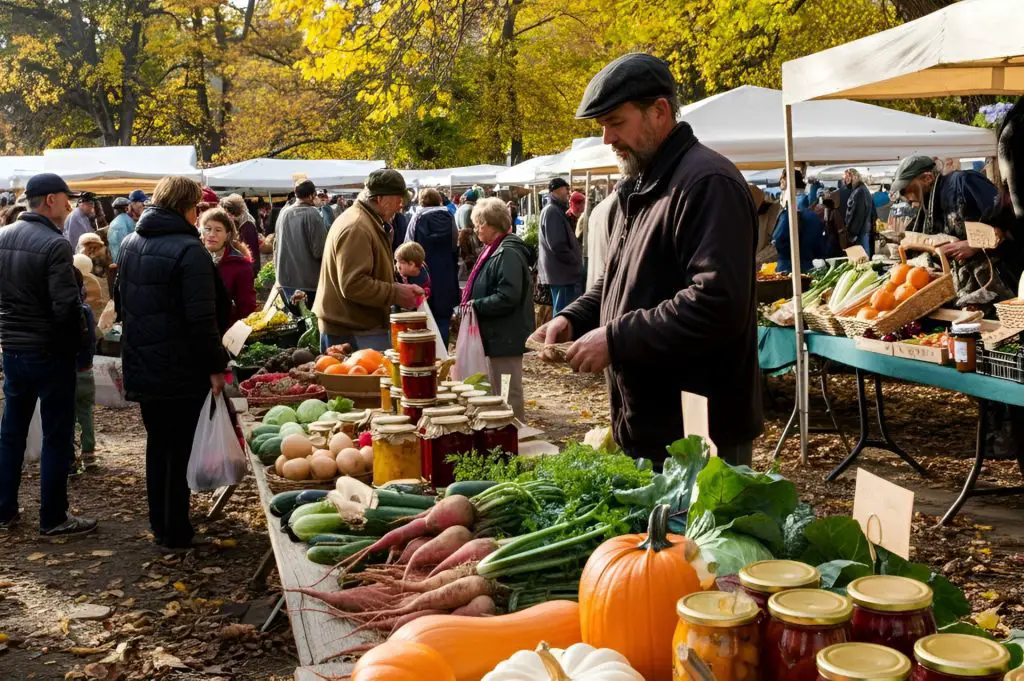
Budgeting
- Plan Ahead: Create a budget for the winter months, taking into account increased heating costs, animal feed, and other expenses. Allocate funds accordingly to avoid financial strain.
- Bulk Purchases: Buy supplies in bulk when possible to save money. Consider joining a buying club or co-op to access bulk discounts.
- Bartering and Trading: Exchange goods and services with neighbors or other homesteaders. Bartering can be a cost-effective way to obtain needed items.
- Side Income: Generate additional income through side businesses, such as selling homemade goods, offering services, or renting out a room.
Cost-Effective Solutions
- DIY Projects: Tackle home repairs and maintenance projects yourself to save on labor costs. Learn new skills through online tutorials and books.
- Energy Audits: Conduct an energy audit to identify areas where you can reduce energy consumption. Simple changes like sealing drafts and using energy-efficient light bulbs can make a big difference.
- Renewable Energy: Invest in renewable energy sources like solar panels or wind turbines. While the initial cost may be high, the long-term savings can be significant.
The Rewards of Winter Homesteading

The rewards of winter homesteading are myriad and can be deeply enriching. From the sense of self-sufficiency to the profound connection with nature, the benefits extend far beyond the physical aspects of survival. Here’s an expanded section on the rewards of winter homesteading:
1. Self-Sufficiency
Independence
- Providing for Yourself: Knowing that you can provide for yourself and your family is incredibly empowering. From growing your own food to generating your own energy, self-sufficiency fosters a sense of independence and control over your life.
- Skill Development: Winter homesteading requires a diverse set of skills, from carpentry and cooking to animal care and gardening. Each new skill adds to your toolkit and enhances your ability to handle a wide range of tasks.
Sustainability
- Reduced Carbon Footprint: Living off the land promotes a more sustainable lifestyle. By growing your own food, using renewable energy sources, and reducing waste, you contribute to a healthier planet.
- Resource Management: Efficient use of resources, such as water and energy, not only saves money but also helps preserve the environment. Winter is a time to refine these practices and ensure they are integrated into your daily routine.
2. Connection to Nature
Observation and Appreciation
- Natural Cycles: Winter provides a unique opportunity to observe the natural world. Watch the changing patterns of wildlife, the formation of snowflakes, and the subtle shifts in the landscape. These observations can deepen your understanding and appreciation of nature.
- Beauty in Simplicity: The stark beauty of winter can be breathtaking. Snow-covered landscapes, frost on branches, and the quiet stillness of a winter morning offer a different kind of beauty that is often overlooked.
Seasonal Awareness
- Understanding Ecosystems: Winter is a time to study the ecosystems around you. Learn about the plants and animals that thrive in cold conditions and how they adapt to survive. This knowledge can inform your homesteading practices and help you better integrate with the natural environment.
- Weather Patterns: Paying attention to weather patterns and climate changes can help you make more informed decisions about your homestead. Understanding the rhythms of nature can guide your planning and preparations.
3. Personal Growth
Resilience and Adaptability
- Overcoming Adversity: Winter homesteading teaches resilience and adaptability. Facing challenges like extreme weather, power outages, and isolation builds character and strengthens your problem-solving skills.
- Mental Toughness: The mental fortitude developed through winter homesteading can be applied to other areas of life. Learning to stay calm and focused in difficult situations is a valuable skill that enhances your overall well-being.
Confidence and Competence
- Achieving Goals: Setting and achieving goals, whether it’s building a new structure, preserving a large harvest, or successfully caring for animals through the winter, boosts confidence and competence. Each success is a step forward in your homesteading journey.
- Continuous Learning: Winter is a time for continuous learning. Whether you’re reading books, taking online courses, or experimenting with new techniques, the commitment to learning keeps your mind sharp and your skills current.
4. Community and Social Connections
Building Relationships
- Local Community: Winter can bring people closer together. Participating in local events, joining homesteading groups, and volunteering in the community can help you build strong relationships and a support network.
- Sharing Knowledge: Sharing your experiences and knowledge with others can be incredibly rewarding. Teaching classes, writing blogs, or simply having conversations can inspire and help others on their homesteading journeys.
Support and Collaboration
- Collaborative Efforts: Working together with neighbors and fellow homesteaders can make tasks easier and more enjoyable. Collaborative efforts, such as sharing resources, can also enhance your overall homesteading experience.
- Emergency Preparedness: Having a strong community means you have a network of people who can help in times of need. Whether it’s a power outage or a severe storm, knowing you have support can provide peace of mind.
5. Quality of Life
Mental and Emotional Well-Being
- Stress Reduction: The simplicity and rhythm of homesteading can reduce stress and promote mental well-being. The daily routines, the connection to nature, and the sense of purpose all contribute to a more balanced and fulfilling life.
- Mindfulness and Gratitude: Practicing mindfulness and gratitude can enhance your overall quality of life. Taking time to appreciate the small things, like a warm cup of tea or a sunny winter day, can bring joy and contentment.
Physical Health
- Active Lifestyle: Winter homesteading involves physical activities like chopping wood, shoveling snow, and tending to animals. These activities keep you active and promote physical health.
- Nutritious Diet: Eating a diet rich in fresh, homegrown produce and lean proteins can improve your overall health. The nutritional value of your food is often higher when it comes directly from your homestead.
6. Cultural and Historical Connection
Heritage and Traditions
- Preserving Traditions: Winter homesteading often involves traditional practices passed down through generations. Preserving these traditions, such as canning, quilting, and storytelling, connects you to your cultural heritage.
- Historical Skills: Learning and practicing historical skills, such as blacksmithing, spinning, and weaving, can be a rewarding way to connect with the past and honor the wisdom of previous generations.
Educational Value
- Passing on Knowledge: Teaching these skills to younger generations ensures that they are not lost. Whether it’s through formal education or informal mentorship, passing on your knowledge can have a lasting impact.
- Cultural Exchange: Engaging with different cultures and learning about their homesteading practices can broaden your perspective and enrich your own homesteading experience.
Final Thoughts
Homesteading during winter is a journey of discovery and growth. It tests your limits and pushes you to become a better version of yourself. While the challenges are real, the rewards are profound. Whether you are a seasoned homesteader or just starting out, embracing the winter season can lead to a deeper connection with the land and a greater sense of fulfillment. So, as the snow begins to fall, remember that every challenge is an opportunity to thrive. Embrace the cold, tend to your homestead, and find joy in the simple pleasures of winter living.
